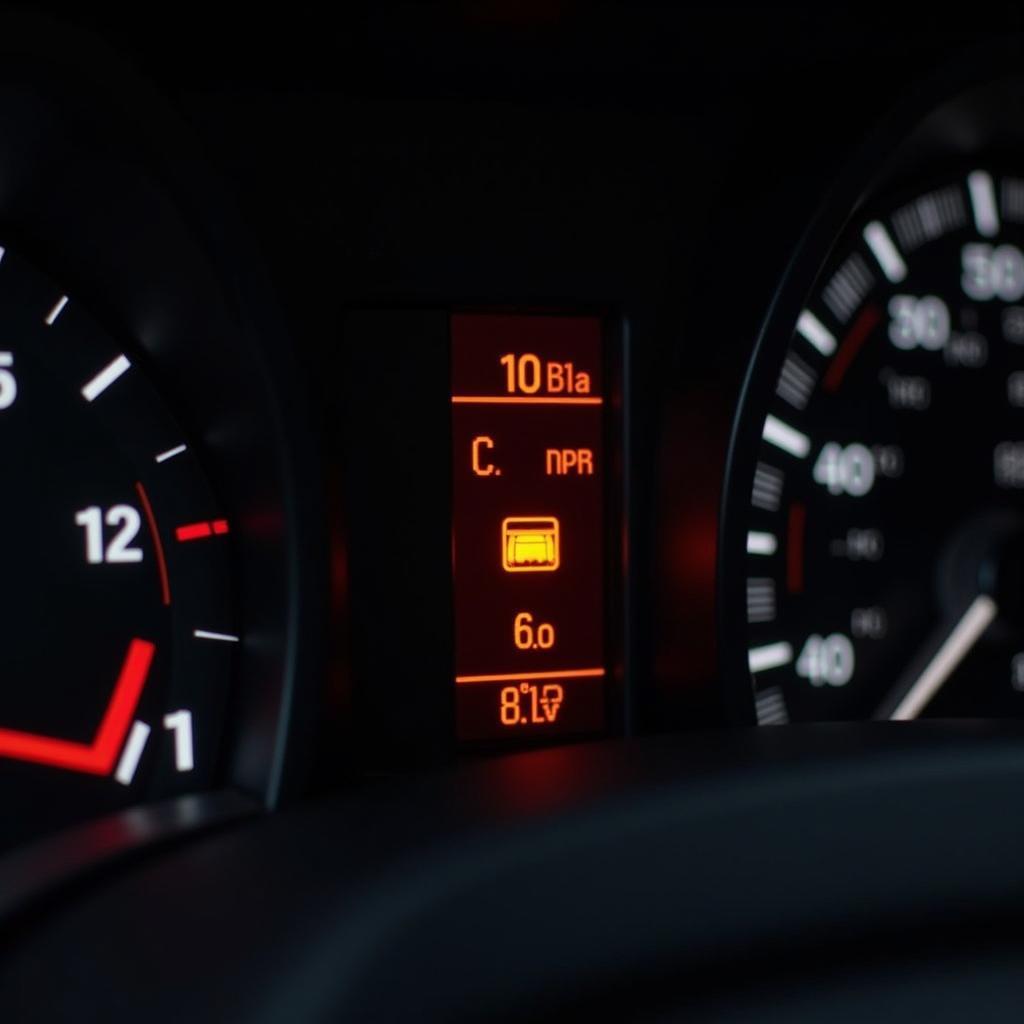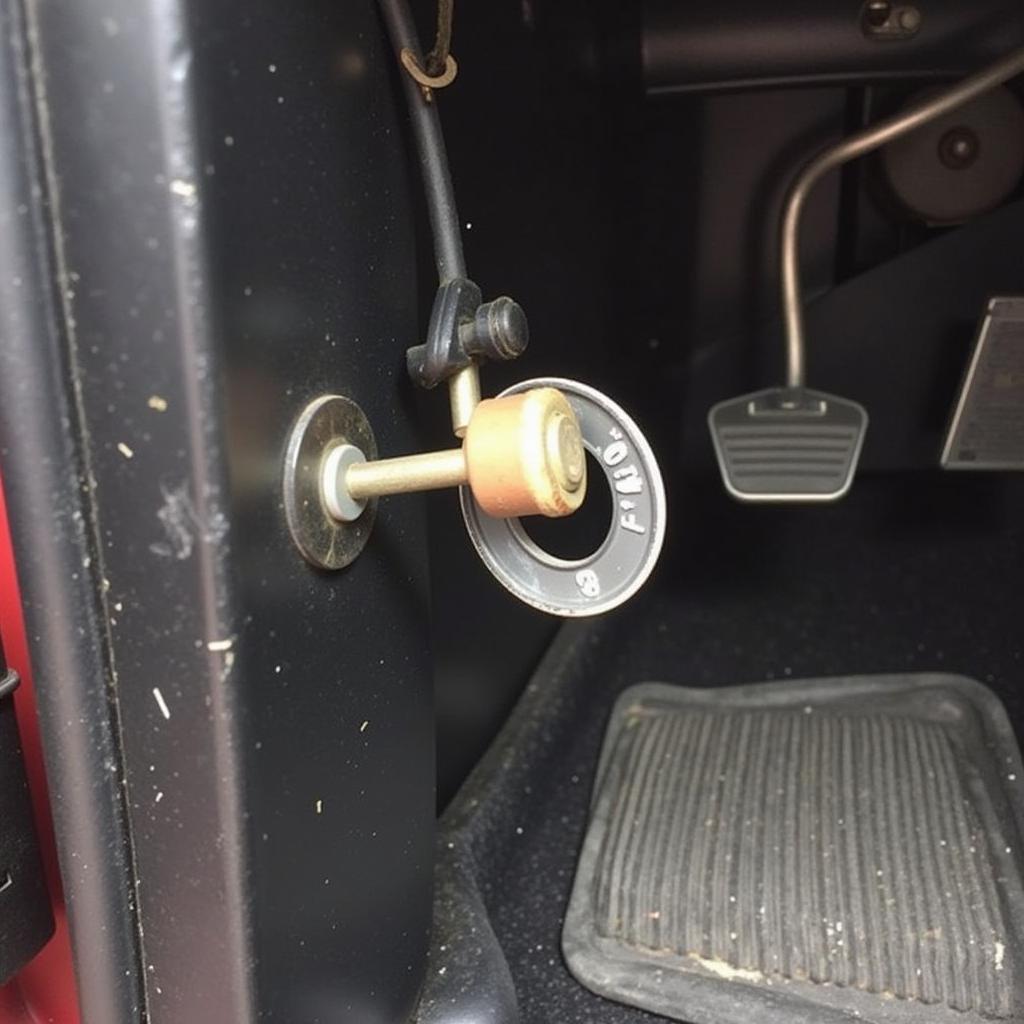The dreaded tyre pressure warning light on your Seat Leon dashboard – a sight that can strike fear into even the most experienced driver. This amber symbol, often resembling an exclamation mark within a tyre cross-section, indicates a potential issue with one or more of your tyres. But don’t panic just yet! Understanding why the light is on and knowing the right steps to take can save you time, money, and potentially even a dangerous situation on the road.
Understanding Your Seat Leon’s Tyre Pressure Monitoring System (TPMS)
Your Seat Leon, like many modern cars, is equipped with a Tyre Pressure Monitoring System (TPMS). This sophisticated system constantly monitors the air pressure inside your tyres and alerts you if it detects a problem. There are two main types of TPMS:
- Direct TPMS: This system uses sensors located within each wheel to directly measure tyre pressure. If the pressure drops below a certain threshold, the sensor sends a signal to your car’s computer, triggering the warning light on your dashboard.
- Indirect TPMS: Instead of directly measuring pressure, this system utilizes the wheel speed sensors that are part of your Anti-lock Braking System (ABS). If a tyre is underinflated, it will rotate at a slightly different speed than the other tyres. The ABS system detects this discrepancy and triggers the warning light.
Knowing which type of TPMS your Seat Leon has can be helpful when diagnosing the cause of the warning light. Consult your owner’s manual or contact a Seat dealership to determine which system your vehicle utilizes.
Common Reasons Your Tyre Pressure Warning Light Is On
While a drop in tyre pressure is the most likely culprit, several factors can trigger the warning light on your Seat Leon. Let’s explore some of the most common reasons:
- Underinflated Tyres: The most straightforward explanation is that one or more of your tyres simply needs more air. Temperature fluctuations, slow leaks, and even permeation over time can cause tyre pressure to decrease.
- Overinflated Tyres: While less common, overinflating your tyres can also be problematic, leading to a harsher ride, decreased traction, and even an increased risk of a blowout.
- Faulty Tyre Pressure Sensor: Like any electronic component, TPMS sensors can malfunction. A faulty sensor might send inaccurate readings to your car’s computer, causing the warning light to illuminate even when your tyre pressures are fine.
- Sensor Battery Issues: TPMS sensors rely on small batteries to function. Over time, these batteries can die, causing the sensor to stop transmitting data and triggering the warning light.
- Recent Tyre Change or Rotation: If you’ve recently had your tyres changed or rotated, the warning light might be on because the TPMS system hasn’t been properly reset. Resetting the system allows it to relearn the position and pressure of each tyre.
- Extreme Temperature Changes: Significant temperature fluctuations, especially during colder months, can cause the air inside your tyres to contract, leading to a drop in pressure and potentially activating the warning light.
 Seat Leon TPMS Warning Light
Seat Leon TPMS Warning Light
What to Do When Your Tyre Pressure Warning Light Comes On
Seeing the tyre pressure warning light illuminate can be unnerving, but it’s crucial to address the issue promptly. Here’s a step-by-step guide on what to do:
- Don’t Panic, but Don’t Ignore It: While a flashing warning light might seem alarming, it’s important to remain calm and avoid panicking. However, don’t ignore the warning either. Continuing to drive on underinflated or overinflated tyres can be dangerous and potentially damage your tyres and vehicle.
- Find a Safe Location: As soon as it’s safe to do so, pull over to the side of the road or find a safe location to inspect your tyres.
- Check Your Tyre Pressure: Use a reliable tyre pressure gauge to check the pressure in each tyre, including the spare. Compare the readings to the recommended pressure listed on the sticker typically located on the driver’s side doorjamb or in your owner’s manual.
- Inflate or Deflate as Needed: If you find a tyre is underinflated, add air in small increments, checking the pressure frequently until it reaches the recommended level. If a tyre is overinflated, carefully release some air until it’s within the specified range.
- Inspect Your Tyres for Damage: While checking the pressure, visually inspect each tyre for signs of damage, such as punctures, cuts, bulges, or uneven wear. If you notice any significant damage, do not attempt to drive on the tyre. Instead, contact a roadside assistance service or have the tyre replaced.
- Reset the TPMS: If your tyre pressures are all within the recommended range and you’ve addressed any issues, you’ll need to reset your TPMS. The reset procedure varies depending on your Seat Leon’s model year. Refer to your owner’s manual for specific instructions. In many cases, you can reset the system through the car’s infotainment menu.
- Monitor the Warning Light: After taking the necessary steps, continue to monitor the tyre pressure warning light. If it stays off, you’ve likely addressed the issue. If the light remains on or illuminates again soon after, it’s best to have your vehicle inspected by a qualified mechanic.
When to Consult a Professional
While you can often resolve simple tyre pressure issues yourself, some situations warrant the expertise of a professional. Consider seeking assistance from a qualified mechanic or tyre specialist if:
- The Warning Light Persists: If the warning light remains on or reappears after you’ve checked and adjusted your tyre pressures, it could indicate a deeper issue with your TPMS or another vehicle system.
- You Suspect a Sensor Problem: If you suspect a faulty TPMS sensor, a professional can diagnose the issue using a specialized tool to read the sensor data and determine if it needs replacement.
- You’re Uncomfortable Handling Tyre Issues: If you’re unsure about checking or adjusting your tyre pressures or are uncomfortable handling any aspect of the situation, it’s always best to err on the side of caution and consult a professional.
“Ignoring a TPMS warning light is like ignoring a fever,” says John Smith, a seasoned automotive technician with over 20 years of experience. “It might not seem like a big deal initially, but it’s often an indicator of a potentially bigger problem that shouldn’t be ignored.”
Tips for Maintaining Proper Tyre Pressure
Maintaining proper tyre pressure is crucial for your Seat Leon’s safety, performance, and fuel efficiency. Here are some tips to keep your tyres in top shape:
- Check Regularly: Make it a habit to check your tyre pressure at least once a month and before long journeys, especially during colder months.
- Use a Quality Gauge: Invest in a reliable tyre pressure gauge and learn how to use it correctly.
- Don’t Rely Solely on Visual Inspection: While a visibly flat tyre is easy to spot, you can’t always tell if a tyre is underinflated simply by looking at it. Always use a gauge for accurate readings.
- Know Your Recommended Pressure: The recommended tyre pressure for your Seat Leon is specific to your vehicle and can be found on the sticker inside the driver’s side doorjamb or in your owner’s manual. Don’t rely on the maximum pressure listed on the tyre sidewall, as this is not always the optimal pressure for your vehicle.
- Consider Nitrogen Inflation: Nitrogen molecules are larger than oxygen molecules, meaning they escape from tyres more slowly. Consider having your tyres inflated with nitrogen to help maintain pressure for longer periods.
- Rotate Your Tyres: Regular tyre rotation helps ensure even wear and tear, which can prolong the life of your tyres and contribute to optimal performance.
Conclusion
The tyre pressure warning light on your Seat Leon is a safety feature designed to keep you informed about the condition of your tyres. By understanding what triggers the light, knowing how to respond, and following proper tyre maintenance practices, you can ensure a safe and enjoyable driving experience. Remember, when in doubt, consult a qualified professional to diagnose and address any tyre-related concerns.

